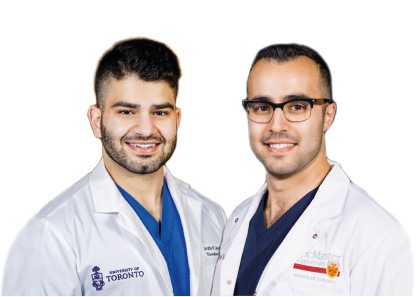
Virtual consultations appear comparable to care received in-person when it comes to clinical outcomes as well as patient and practitioner satisfaction, a systematic review and meta-analysis of all primary studies evaluating virtual patient visits in vascular surgery has demonstrated.
“The data tell us telemedicine can help save patients time and money. However, in considering the effectiveness of telemedicine moving forward, one thing we have to ask ourselves is: Are there other unintended downstream healthcare costs with the use of virtual consultations and visits?” first-named investigator, Arshia Javidan, MD, a second-year vascular surgery resident at the University of Toronto, observed in an interview with Vascular Specialist, after delivering data from the study at the 2022 annual meeting of the Canadian Society for Vascular Surgery (CSVS) in Vancouver (Sept. 9–10). “For example, are additional investigations, or even unnecessary investigations, being ordered when we’re seeing a patient virtually and not necessarily being able to perform a comprehensive physical exam?”
Javidan was part of a research team led by Faysal Naji, MD, vascular surgeon and assistant professor at McMaster University in Hamilton, Ontario, who delved into the data produced by the analysis. Some 22 studies were included in the review and involved around 29,000 patients. The study group’s limited meta-analysis of three randomized-controlled trials (RCTs) assessing diabetic foot ulcers did not detect any statistically significant differences in terms of ulcer healing, mortality or amputation rates, they noted. “In terms of other clinical outcomes, we grouped together what we were able to find based off the data available,” Javidan said. “Other clinical outcomes included post-operative readmission rates and data collected from patient questionnaires related to patient-related outcome measures. Largely, there was no statistically significant difference between virtual and in-patient care.”
From a cost savings point of view, continued Javidan, the study found that patients were saving time, money and fuel through the use of virtual consultations. In terms of travel distance savings, the number “was relatively substantial at between 31 and 150 miles, 39 to 115 minutes of travel time, and 2.2 to 12 gallons of fuel saved. When you consider that a lot of vascular surgery patients will require longitudinal follow-up with several visits per year, this can really add up.”
Among seven studies evaluating patient satisfaction, patients generally felt telemedicine was either comparable or better than in-person visits, Javidan and colleagues found.
The researchers had felt there was a need to assess the merits of telemedicine—particularly through the lens of vascular surgery practice—from a higher level after analyzing a plethora of level three and four evidence, mostly in the form of cohort studies and case series. “Despite its increasing use in vascular surgery, there was not yet a comprehensive review looking at how virtual visits are used in our specialty, and so we sought to put things together and aggregate results,” Javidan said.
Naji added, “As COVID calmed down a little bit, we noticed that telemedicine was still being used, kind of begging the question that maybe there were some hidden benefits to these shifts in practice patterns that we weren’t identifying.”
Summing up their findings at CSVS 2022, the research team noted: “Telemedicine has the potential to augment vascular surgery practice while reducing resource use for patients and providers alike. Additional high-quality evidence comparing telemedicine to in-person clinical encounters is required to further elucidate the effect that telemedicine and virtual consultations have on clinical outcomes.”












